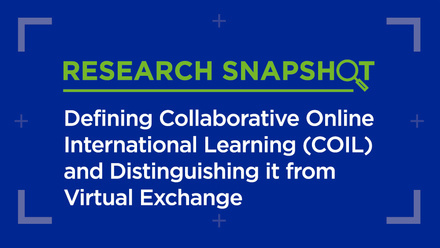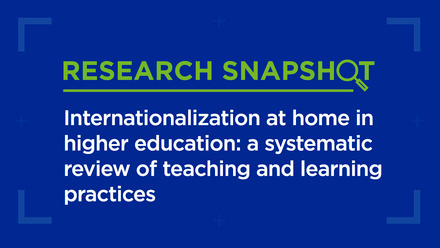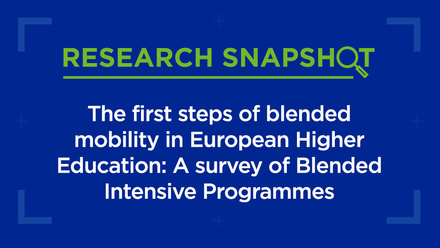Your virtual exchange reading list: 7 resources to explore

As the pandemic continues, brushing up on the nuts and bolts of virtual exchange could be essential for your institution.
With many restrictions still on work and travel, it has become imminently clear that the short-term solutions we found in 2020 will need to evolve into long-term structural changes in the practice of internationalisation. One of the most popular and promising alternatives to physical mobility so far has been virtual exchange, with more and more of us coming to realise that this kind of tech-enhanced international learning is in its own right a powerful tool in the internationalisation arsenal.
Are you joining one of the upcoming EAIE courses on virtual exchange, or just brushing up on how to implement or improve virtual exchange practices in your institution? Below, we've gathered a list of resources to help you start thinking about technology-enabled or enhanced approaches to internationalisation.
What is virtual exchange?
In the last year, you've likely heard terms like 'virtual mobility’ and ‘collaborative online international learning’ used interchangeably with ‘virtual exchange’ and a whole host of other terms. For those who aren't already steeped in the matter, it's good to start by getting a handle on some fundamental terminology and concepts.
The Erasmus+ project EVOLVE offers a helpful overview of what virtual exchange is - and is not. See the helpful video on their page for a three-minute introduction to the concept.
Collaborative online international learning, or COIL, is an approach that greatly overlaps with what is meant by ‘virtual exchange’. To brush up on COIL, see Piet van Hove's blog post on ‘COIL: what’s in an acronym?’.
Implementing virtual exchange
Once you've acquainted yourself with the concepts and the terminology, it's time to start thinking about implementation. The EAIE Online Academy will provide a clear overview of the different models and approaches for introducing/bringing virtual exchange to your institution. Consider brushing up beforehand with some of the following articles.
To kick off some high-level thinking on setting up your institution's strategy, you can get started with these 7 tips for implementing virtual mobility .
Virtual exchange doesn't exist in a vacuum; it's strongest when paired with other overarching internationalisation initiatives. That's why some would say that Virtual exchange and Internationalisation at Home: the perfect pairing are the perfect pairing.
Finally, let’s not forget how valuable it can be to learn from real world examples. For a case study of how two universities of applied sciences in the Netherlands and Switzerland adapted a COIL model for virtual exchange, you can read our post on Virtual collaboration for international learning.
The wider digital context
The shift to virtual exchange and online education in general is part of the larger dynamic of digitalisation in higher education. For expert takes on everything from blended learning to data safety, you can browse the 2020 Spring edition of Forum magazine on ‘2020 Spring Forum: Digitalisation’.
Additionally, 2019 Spring Forum on ‘2019 Spring Forum: The evolving classroom’ surveys many similar dynamics in digitalisation, with an eye to how they are specifically unfolding in the realm of teaching and learning. EAIE members can browse this and all other editions of Forum for free, and non-members are welcome to sample the free Editor's pick.
Dive deeper
While virtual exchange has certainly been around for a while, it will likely only continue to grow in importance, and it's not going away after the pandemic. Learn practical skills and techniques to implement virtual exchange at your institution by registering for one of our upcoming Online Academy courses on the subject: Launching virtual exchange at your institution and Implementing virtual exchange in the curriculum. You also browse the EAIE blog for more on virtual exchange.






